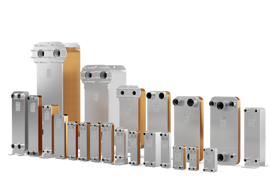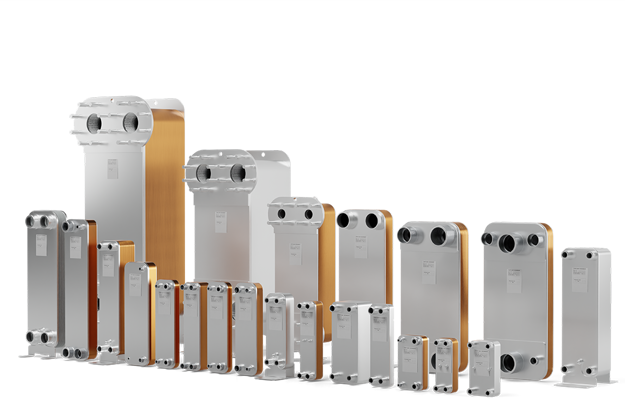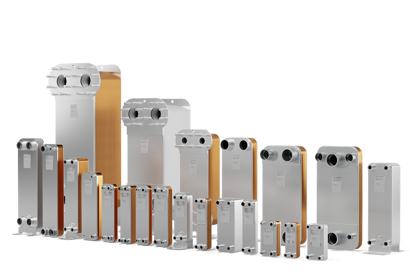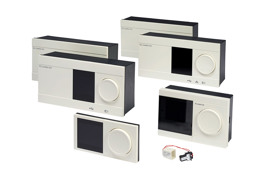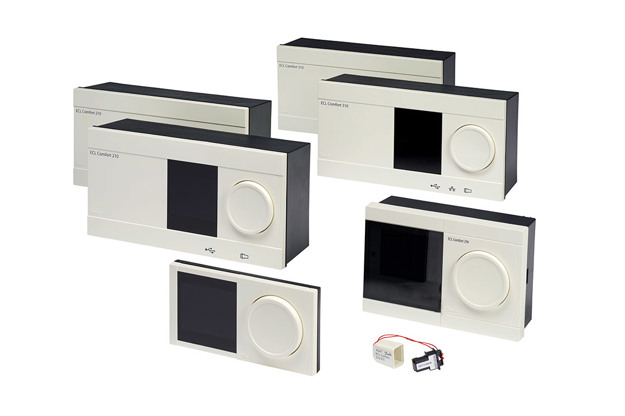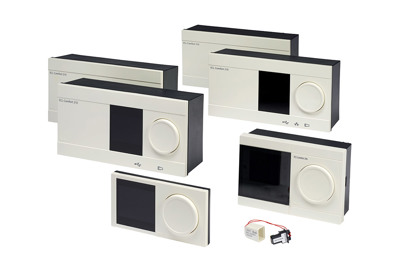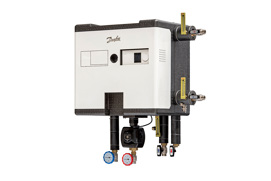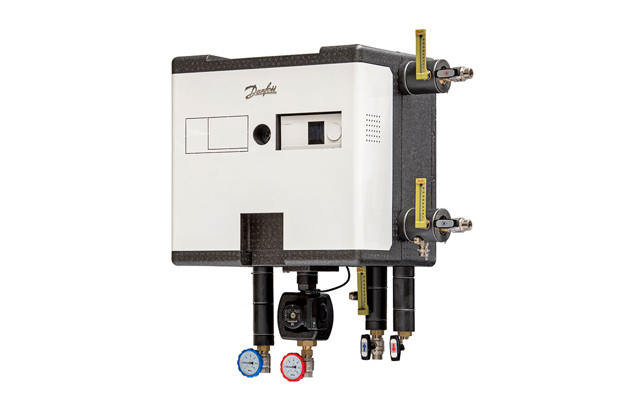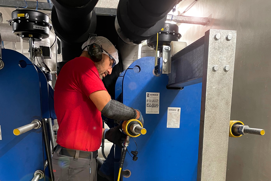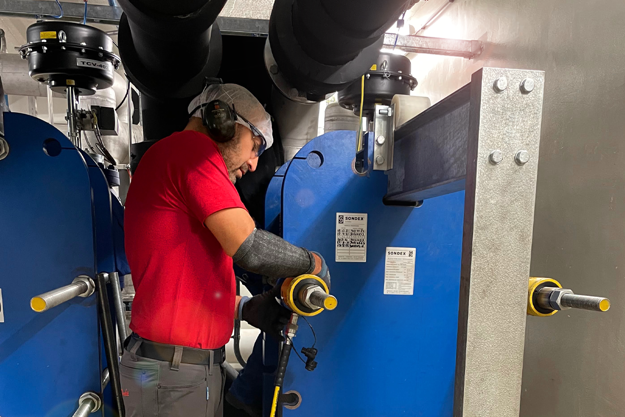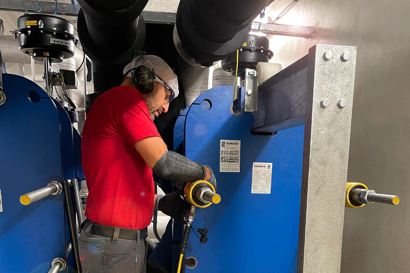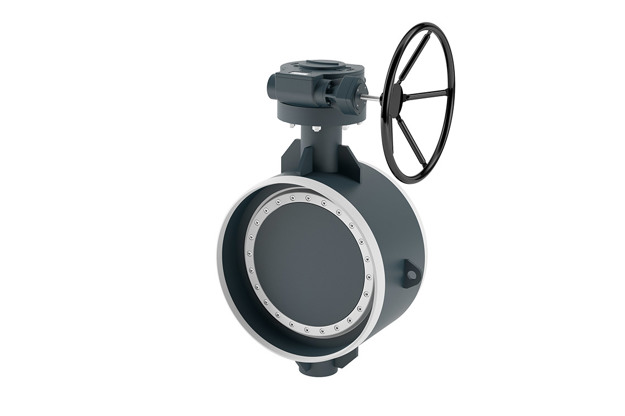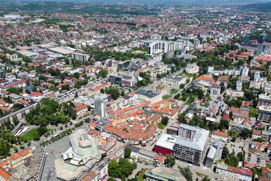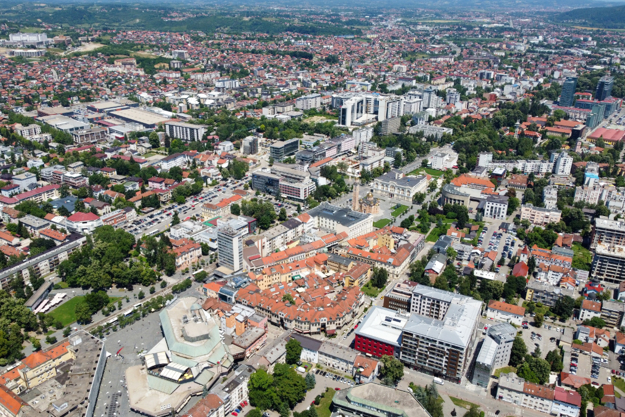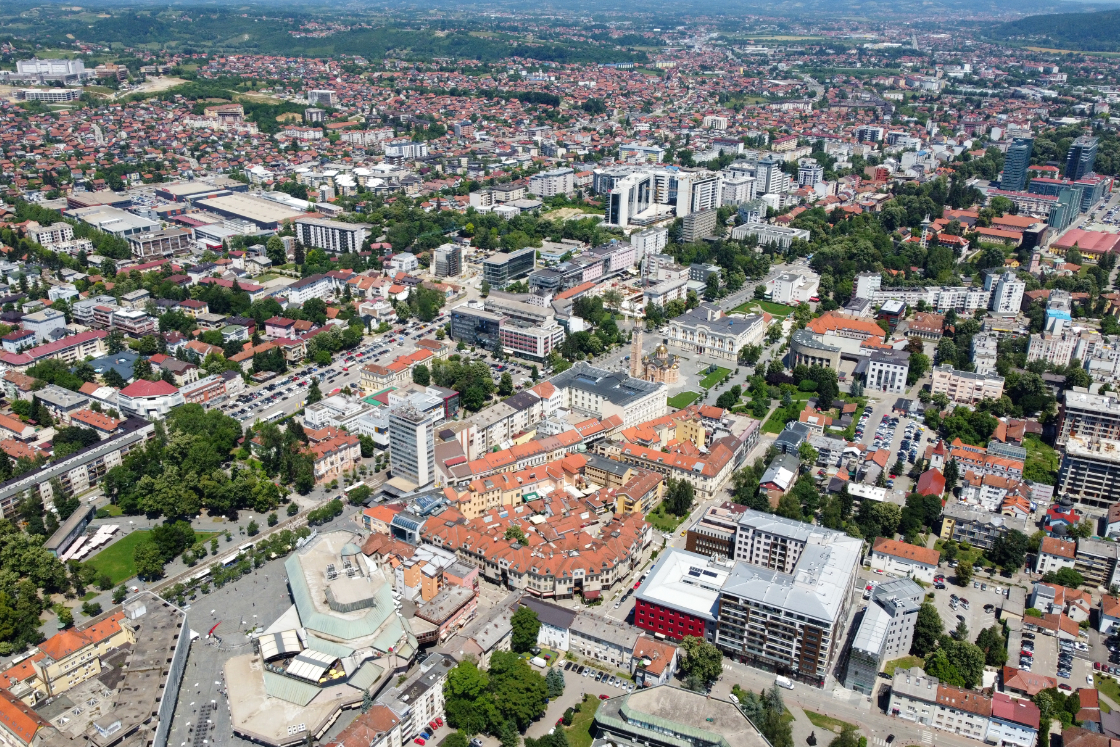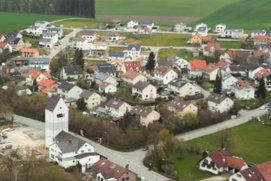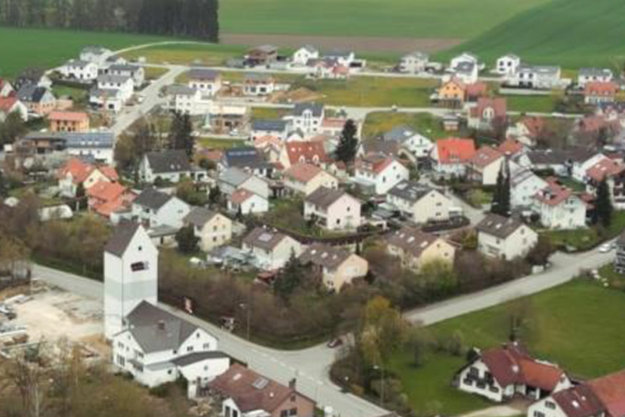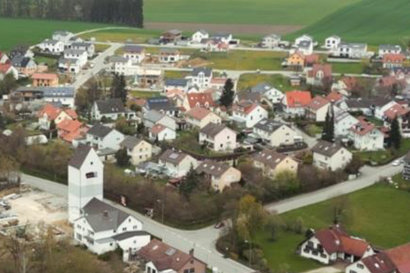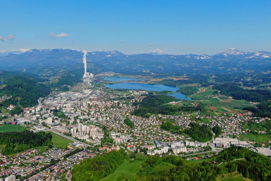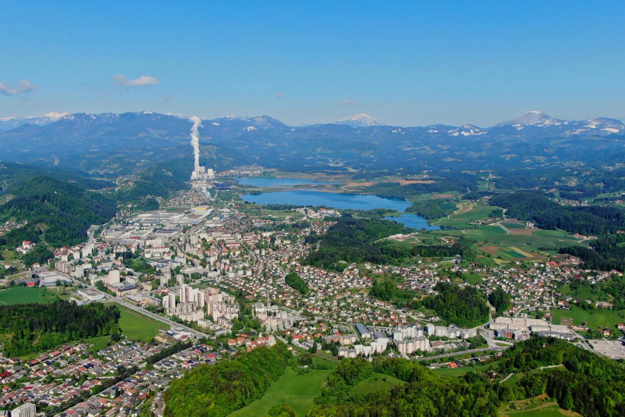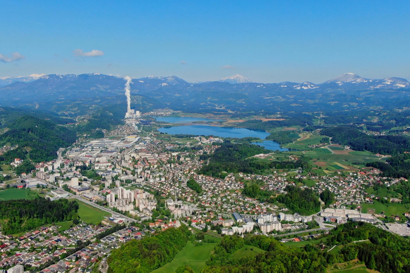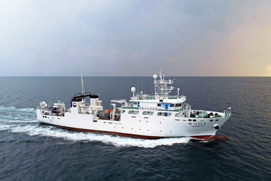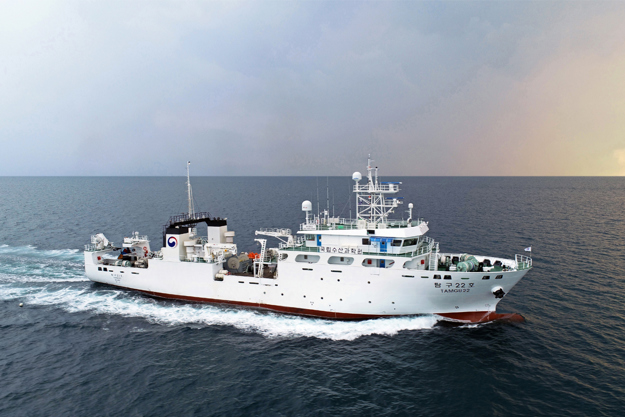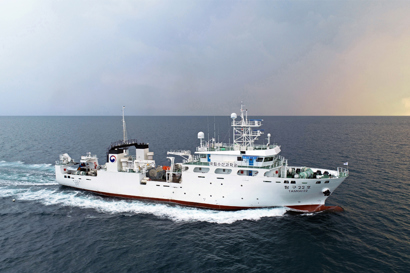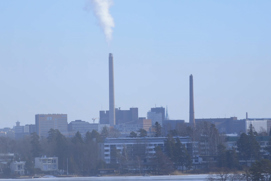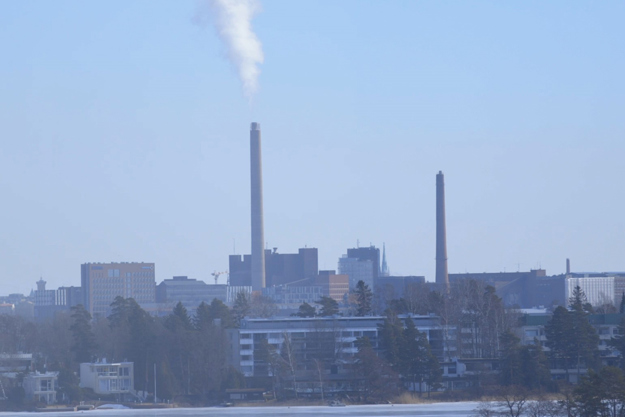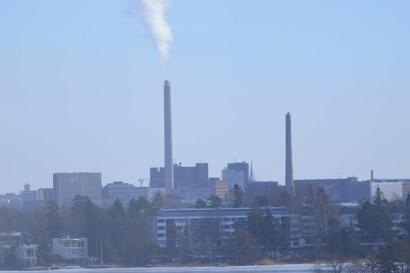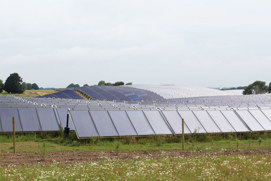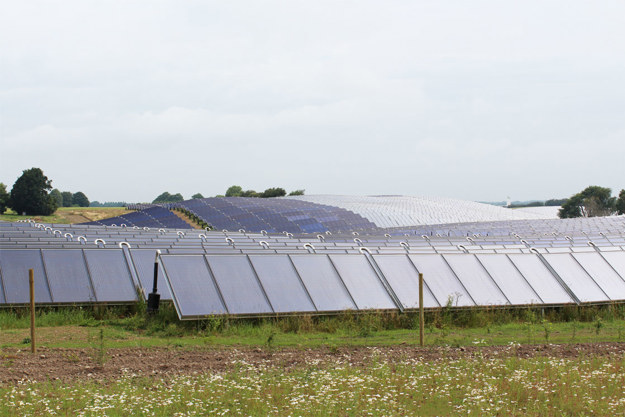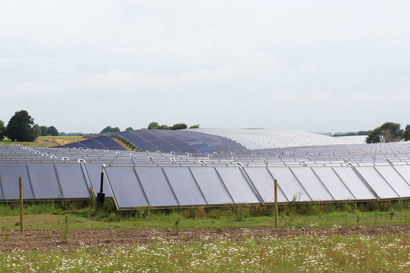Use of district heating equals higher individual comfort and energy efficiency
The basic principles behind district energy are remarkably simple. At one end of the network is an energy source (often a multi-fuel CHP plant). Heat is then distributed via a network of insulated pipes to residential, commercial and industrial buildings across the city.
At the end-user level, individual buildings are connected to the district heating network. In the building a substation with heat exchangers and various control components efficiently transfer hot water for room heating and domestic hot water (DHW) purposes into a building’s HVAC and DHW systems.
Choosing the right heat distribution system for a building (or network) is influenced by three main criteria:
- technical connection specifications;
- heat requirements of the building;
- comfort preferences of the building’s occupants.
The more accurately you can balance those needs, the better the service you will provide to your end-users and the more energy efficiency you will achieve. Both of these factors are good for your business.
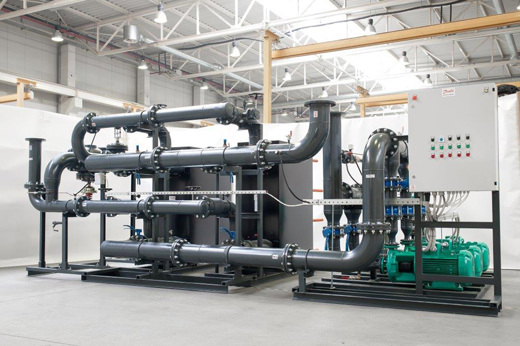
At Danfoss, we develop and produce all major components for our substations and flat stations in-house. Because we manufacture the key components ourselves, you will benefit from optimized heat transfer and system control performance. Pressure, differential pressure, temperature and flow are integrated and automatically controlled on nearly all Danfoss substations.
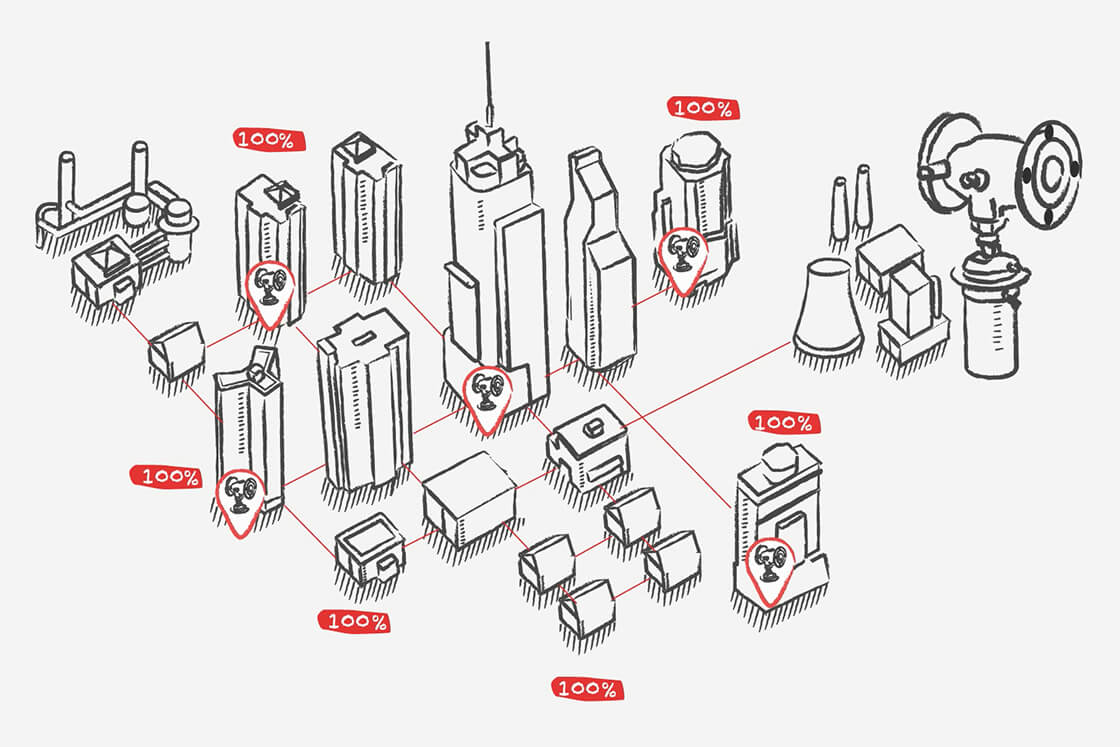
Controllers without auxiliary power, electronic controllers, motorized control valves and energy meters ensure maximum comfort and energy efficiency. They also enable integration into higher-level control and monitoring systems.
How we can help you
Wide product portfolio from flat stations to large site-specific heat transfer units and extensive range of control components
Consultancy and customer dedication, years of experience in buildings and maintaining district energy network
Innovation, technical optimization and performance
Safety and reliability in cooperation, expertise through the entire delivery chain of district energy
Global reach with strong local representation and know-how
Experience with all types of initial energy sources
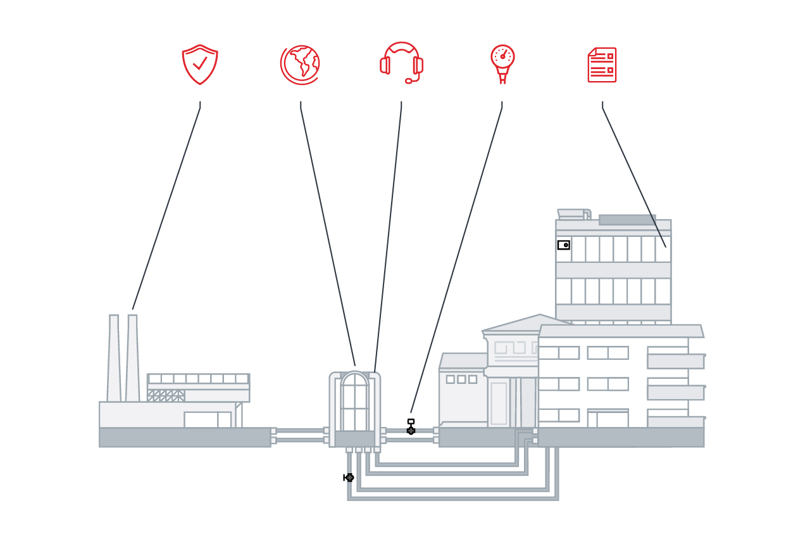
Tools and apps
Related products
-
if (isSmallPicture) {


 Brazed plate heat exchangers
Brazed plate heat exchangersThe performance of the Brazed Plate Heat Exchanger (BPHE) has been proven through 30 years of constant development, ensuring unparalleled efficiency for all applications.
-
if (isSmallPicture) {


 ECL Comfort controllers
ECL Comfort controllersElectronic controllers are intelligent temperature regulators. They can be adapted to a variety of district heating systems, ensuring high comfort level and optimum energy utilization.
-
if (isSmallPicture) {


 Substations
SubstationsSubstations are house heating systems or units in apartments that handle heat transfer from district heating pipes into your home to get hot water and heat on demand.
-
if (isSmallPicture) {


 Gasketed plate heat exchanger service
Gasketed plate heat exchanger serviceOur service team offers repairs, trouble shooting, upgrades, and on-site cleaning and maintenance of your plate heat exchanger solution. We always utilize genuine spare parts both for SONDEX® heat exchangers and our selection of other heat exchanger brands.
-
if (isSmallPicture) {


 Butterfly valves
Butterfly valvesButterfly valves are the components that provide on/off regulation of the district heating, HVAC or water applications where limited space is available for components.
Case stories
-
if (isSmallPicture) {


 Danfoss partners with the city of Banja Luka to decarbonize district energy
Danfoss partners with the city of Banja Luka to decarbonize district energyThe Challenge: Renovate 34 of the city’s largest heating substations
The Solution: Danfoss Leanheat® Monitor enables full substation digitalization
The Results: reduced heat consumption by 10% -
if (isSmallPicture) {


 Successful transition from oil boilers to a local heating network in Eurasburg
Successful transition from oil boilers to a local heating network in EurasburgIn the Wittelsbacher Land near Augsburg the local network in Eurasburg supplies heat to 80 buildings using a wood chip heating system. Danfoss’ substations ensure efficient heating in all building types, and its modern SCADA solution enables remote system monitoring and management.
-
if (isSmallPicture) {


 Improved hydronic balancing of the district heating network in Slovenia
Improved hydronic balancing of the district heating network in SloveniaThe Saleska Valley district heating network is the second largest network in Slovenia, dating back to 1959. Since then, the demands have changed significantly and have challenged the hydronic balancing of the system which was optimized with new intelligent controllers Virtus.
-
if (isSmallPicture) {


 Danfoss shaft generators drive down emissions on board
Danfoss shaft generators drive down emissions on boardSOUTH KOREA: The South Korean National Institute of Fishery Science is enjoying great fuel savings and 20-30% less emissions from its newest research vessel. A special shaft generator solution enabled the vessel to comply with the IMO environmental regulations effective in 2020.
-
if (isSmallPicture) {


 Leanheat makes buildings smart
Leanheat makes buildings smartIn Europe, 30 percent of all energy consumption goes to heat or cool buildings. Danfoss has the solution to lower energy usage and improve indoor climate by adding a digital element: Leanheat software.
-
if (isSmallPicture) {


 Solar heating plant reduces CO2 emissions by 15,700 tonnes annually
Solar heating plant reduces CO2 emissions by 15,700 tonnes annuallyThe world’s largest solar heating plant in Silkeborg, Denmark harnesses energy to heat the homes and workplaces of 40,000 citizens. It supplies 18-20% of the annual heat consumption in the city of Silkeborg, Denmark, which has an ambitious target of CO2 neutrality in heat production by the year 2030.


